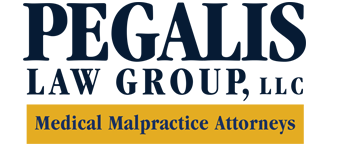-
Protecting Your Health at a Pre-Anesthesia Visit
Any sort of surgery requires thorough preparation. Undergoing anesthesia has risks as well as complications. While sometimes the anesthesiolgist may meet the patient a few days before surgery, it is not the norm. Today it is common that the first time a patient meets the anesthesiologist is just before the operating room.
 In either case, it’s essential not to skip over important health information. Make sure that your medical team knows about any allergies and your reactions to medications in the past. During pre-operative testing, make sure all chronic diseases are listed, as well as all medications being used. If there are any issues when planning to have elective surgery, it’s possible to reschedule the surgery while awaiting additional tests to ensure safety. If the surgery is for a child, be sure to request a pediatric anesthesiologist!
In either case, it’s essential not to skip over important health information. Make sure that your medical team knows about any allergies and your reactions to medications in the past. During pre-operative testing, make sure all chronic diseases are listed, as well as all medications being used. If there are any issues when planning to have elective surgery, it’s possible to reschedule the surgery while awaiting additional tests to ensure safety. If the surgery is for a child, be sure to request a pediatric anesthesiologist! Your anesthesiologist needs your full medical history. Specifically, he or she needs to know if you’ve ever had general anesthesia before, and if so, whether you had a reaction to it. Disclose any recent changes to your health, recent surgeries, recent hospital admissions, medical conditions, and medications.
Pegalis & Erickson, LLC are leading patient advocates who handle surgical malpractice cases on Long Island, New York. Call our malpractice law firm at (516) 684-2900.
-
Physical Therapy for Children with Cerebral Palsy
Cerebral palsy can occur as the result of birth trauma, leaving children and their parents facing the possibility of a lifetime of complications. Physical therapy is often one of the first treatments recommended for cerebral palsy.. Having your child tested through early intervention programs available in your area, can greatly help your child achieve better physical growth and development.
 Physical therapy can help children with cerebral palsy improve their mobility as well as coordination, balance, flexibility, posture, and endurance. The amount of physical therapy that is recommended depends on the severity of symptoms and what other treatments are being used. Other therapies often recommended include occupational therapy, which focuses on helping a child achieve the attributes of daily living such as dressing and eating. Sometimes speech therapy may be necessary to help your child with speaking.
Physical therapy can help children with cerebral palsy improve their mobility as well as coordination, balance, flexibility, posture, and endurance. The amount of physical therapy that is recommended depends on the severity of symptoms and what other treatments are being used. Other therapies often recommended include occupational therapy, which focuses on helping a child achieve the attributes of daily living such as dressing and eating. Sometimes speech therapy may be necessary to help your child with speaking. If your child is living with cerebral palsy or another birth injury in New York, contact Pegalis & Erickson to discuss your situation with an experienced birth injury attorney. Contact our office today at (516) 684-2900 Or email us here.
-
Has Your Doctor Been Accused of Misconduct?
 Prior to putting your health and your life in the hands of a doctor, you as a proactive patient should take advantage of available information concerning a physician’s background
Prior to putting your health and your life in the hands of a doctor, you as a proactive patient should take advantage of available information concerning a physician’s background In New York, the Office of Professional Medical Conduct—OPMC—investigates complaints about healthcare professionals. You can use the OPMC website to research your providers and find out if they have any record of complaints in their past. This information can help you make an informed decision about your healthcare. When considering a doctor for your care, you can also check doctors’ backgrounds on the New York State Physician Profile Website.
The medical malpractice lawyers in New York at Pegalis & Erickson, LLC can assist you if you suspect medical negligence has impacted your healthcare. To discuss the details of your case, please call (516) 684-2900. We advocate for people of all ages who have been victims of avoidable negligence that caused them life-altering harm or death.
-
Is Labor Induction Dangerous?
Labor induction is sometimes required if delaying birth could be dangerous to you or your child. In some pregnancies, a doctor may recommend labor induction for convenience, especially if you live far from the hospital. Although labor induction is a common procedure, it does carry risks. When medical mistakes are made before or during induction, those risks increase for both you and your child. Here are some risks of labor induction:
Increased Need for C-Section
After labor induction, the risk of needing a C-section increases. First-time mothers whose cervixes have not dilated appropriately may need a C-section after induction. Having a C-section introduces more risks into the delivery and recovery process, including an increased risk of infection for both you and your baby. It also extends the time it takes to recover from giving birth. Reduced Heart Rate
Reduced Heart Rate
When labor is induced, the medication used can cause many contractions. In addition to being painful, having too many contractions can lower your baby’s heart rate by reducing the supply of oxygen to the baby’s brain. Low heart rate and low oxygen levels can lead to birth injuries and other complications that can have lifelong effects for your child if there was a lack of proper medical monitoring and treatment.Increased Risk of Post-Delivery Bleeding
Inducing labor increases the risk of a serious condition called uterine atony, which causes dangerous hemorrhaging. Uterine atony occurs when the uterus doesn’t contract properly after giving birth. Labor induction increases the risk of uterine atony which happens more often after induction. Do you think you experienced an avoidable complication during labor induction? Do you believe your labor was unnecessarily induced, putting you at risk? Contact our experienced medical malpractice attorneys in New York at Pegalis & Erickson, LLC. If you have concerns please call us at (516) 684-2900.
Recent Posts
Popular Posts
categories
- Uncategorized
- Infographic
- Patient Safety
- Patient Health
- Stillbirth
- Birth Injuries
- Medical Malpractice
- Medical Negligence
- Event
- Erb's Palsy
- Injury
- ER
- Video
- Cancer Misdiagnosis
- Medication Errors
- Cerebral Palsy
- Medical Negligence Lawyer
- Anesthesia Injuries
- Brachial Plexus
- Prostate Cancer
- About Us
- Men's Health
- Skin Cancer
- Breast Cancer
- Misdiagnosis
